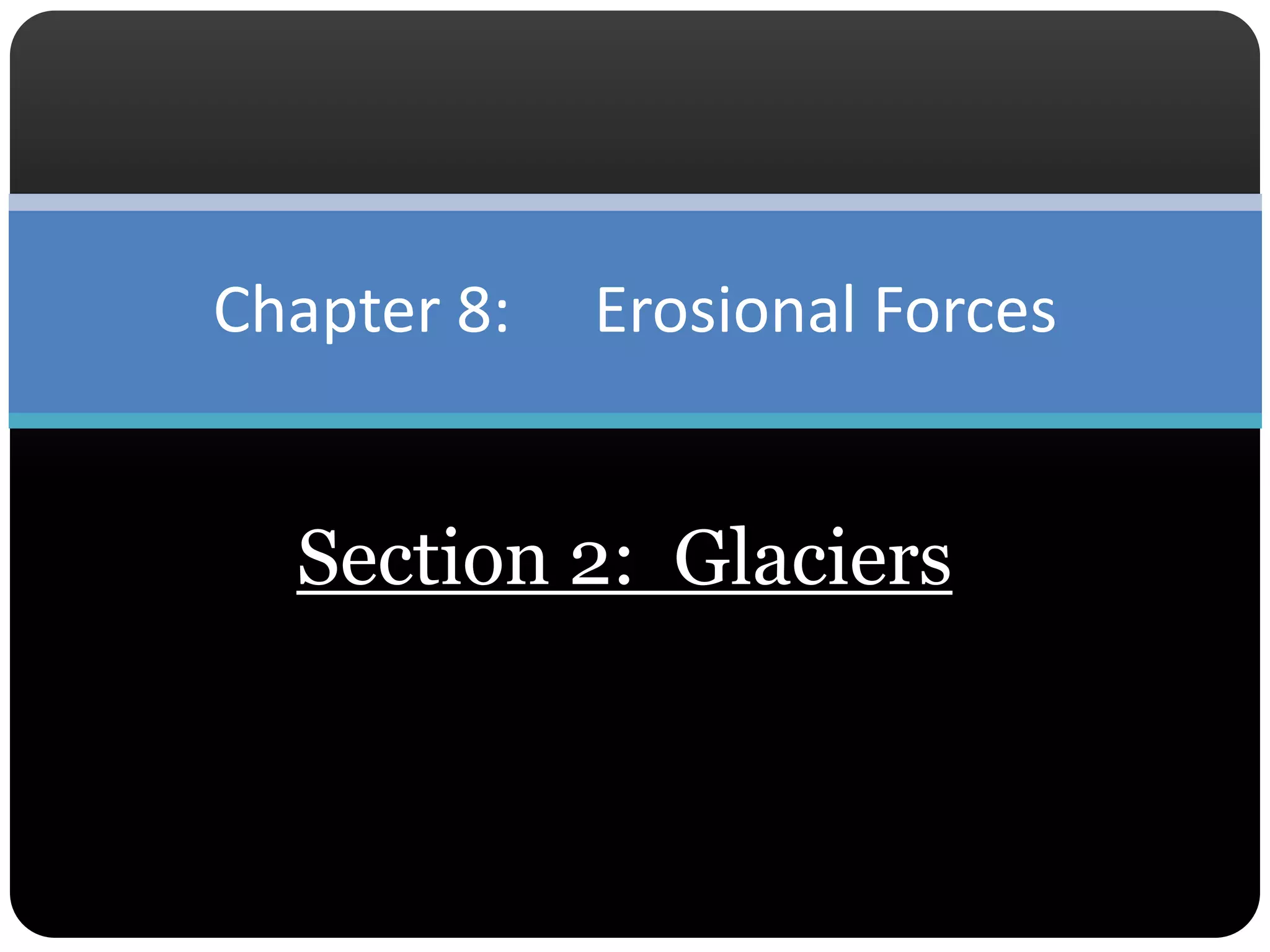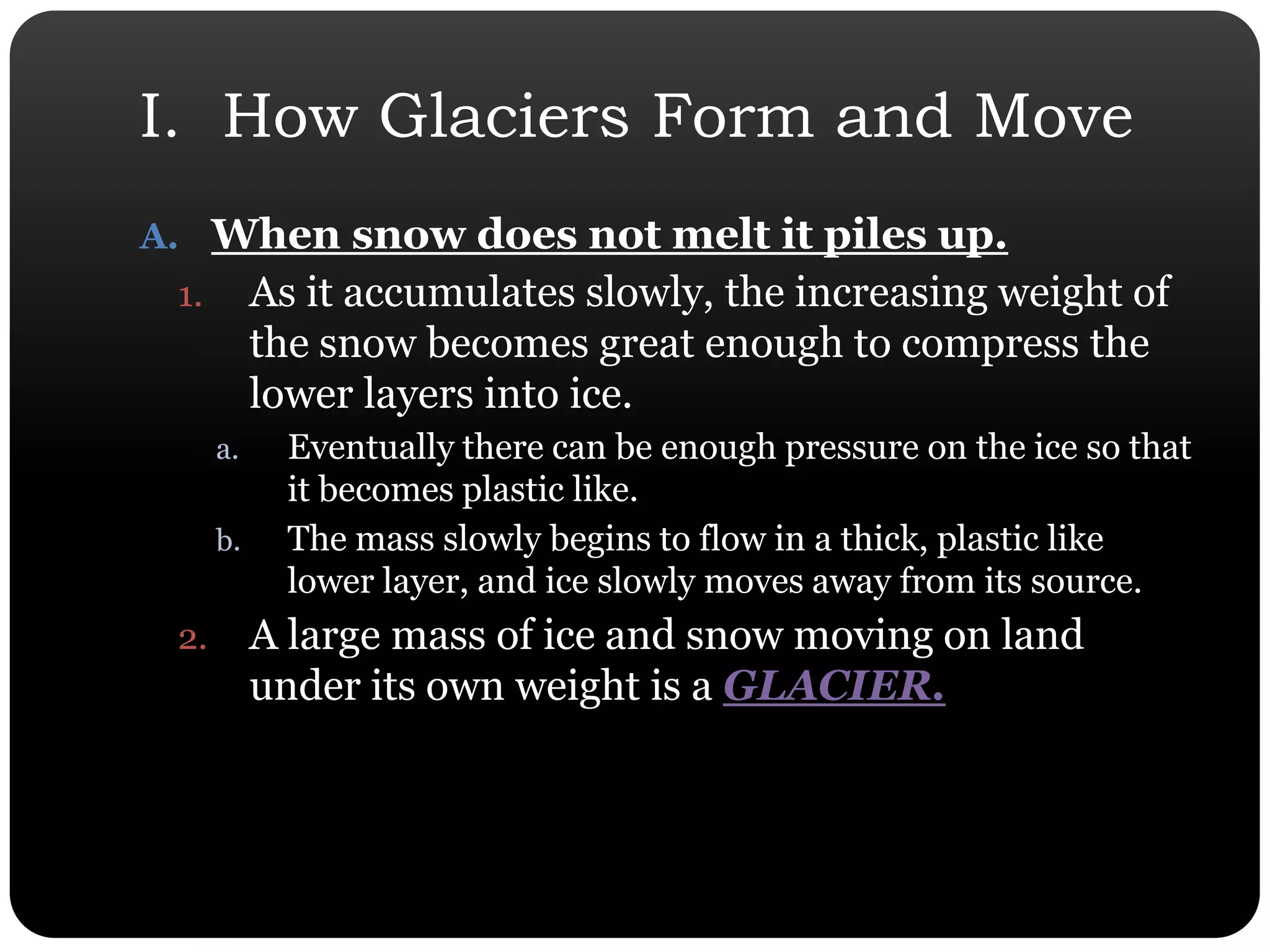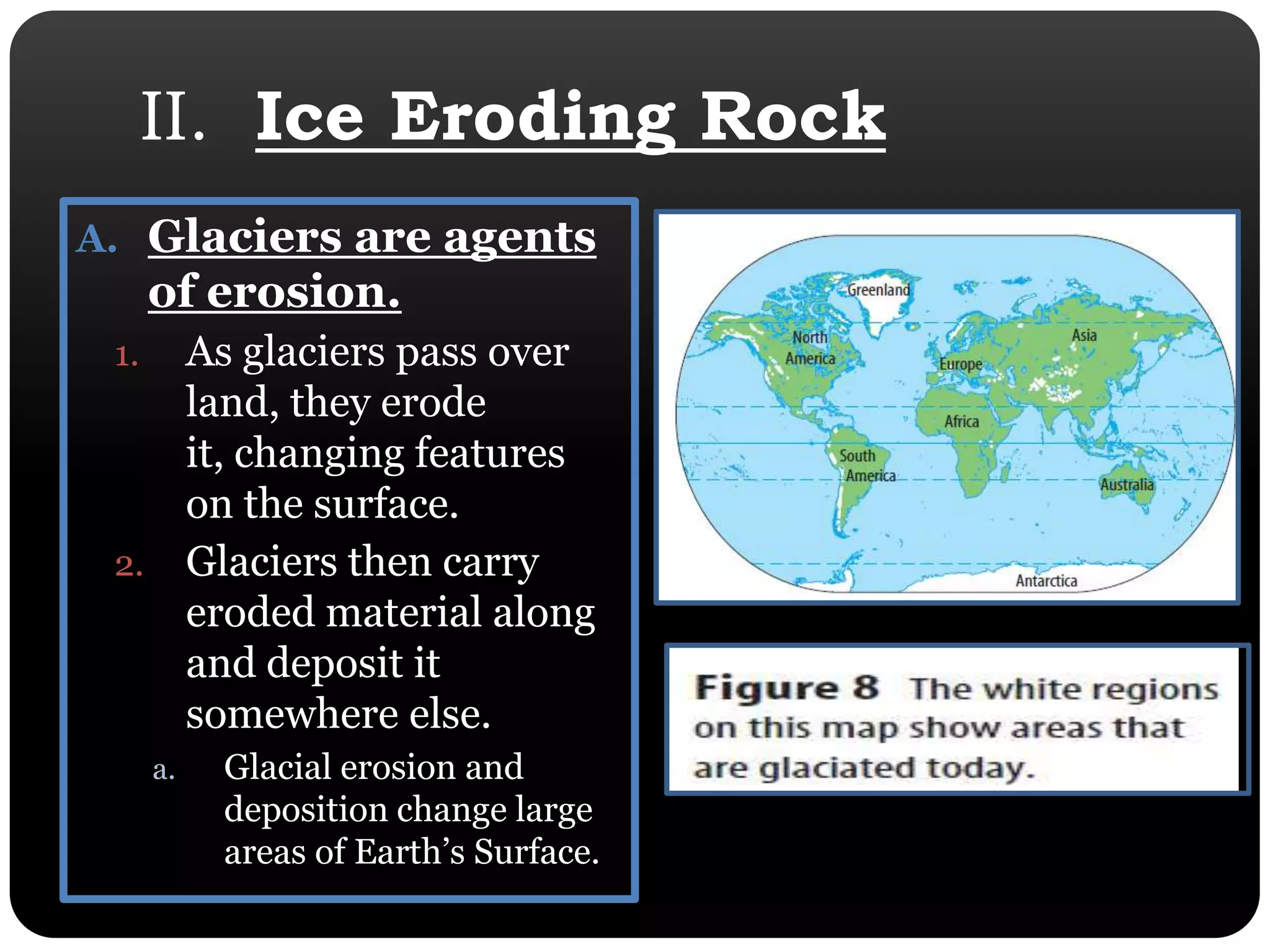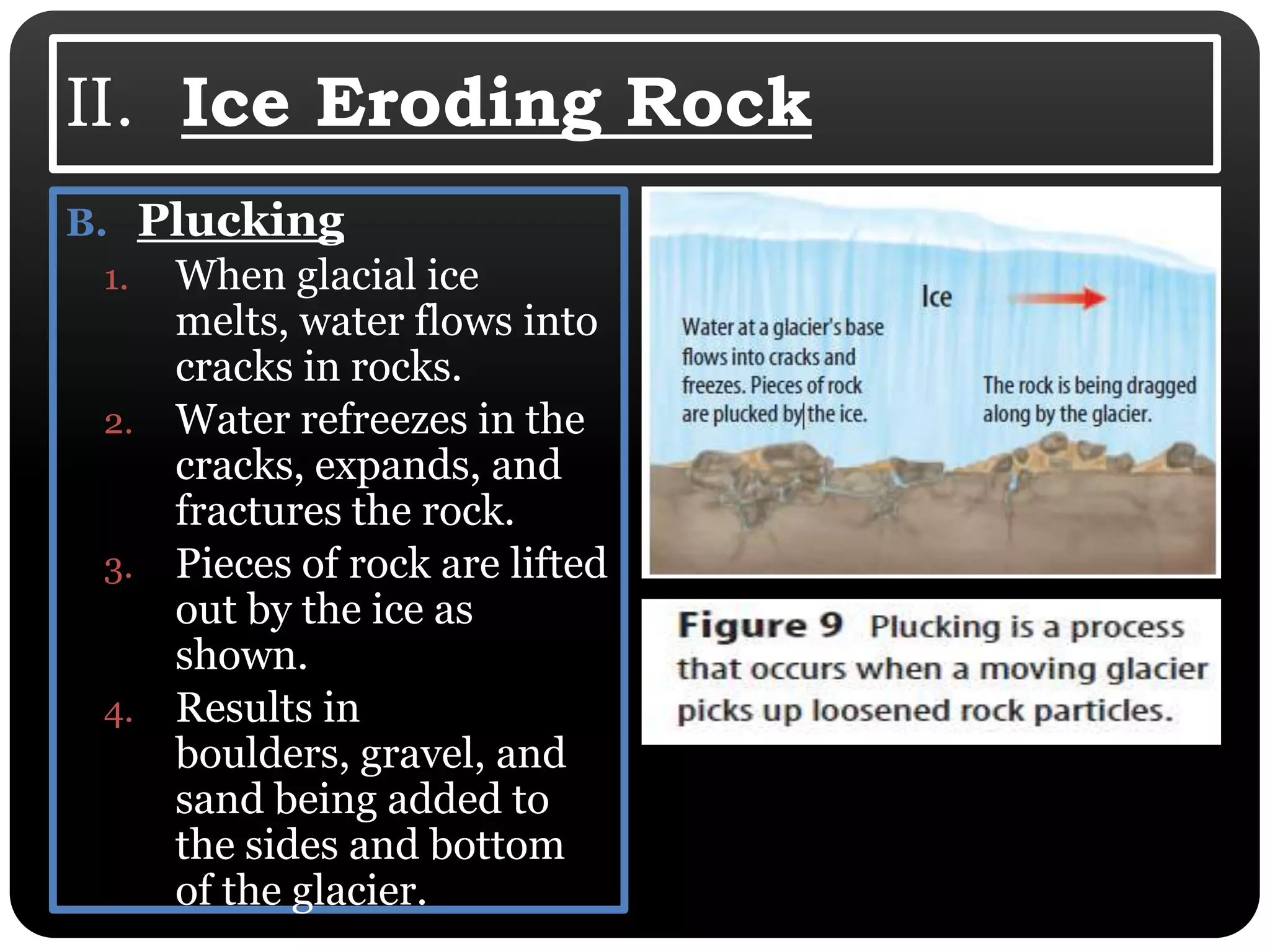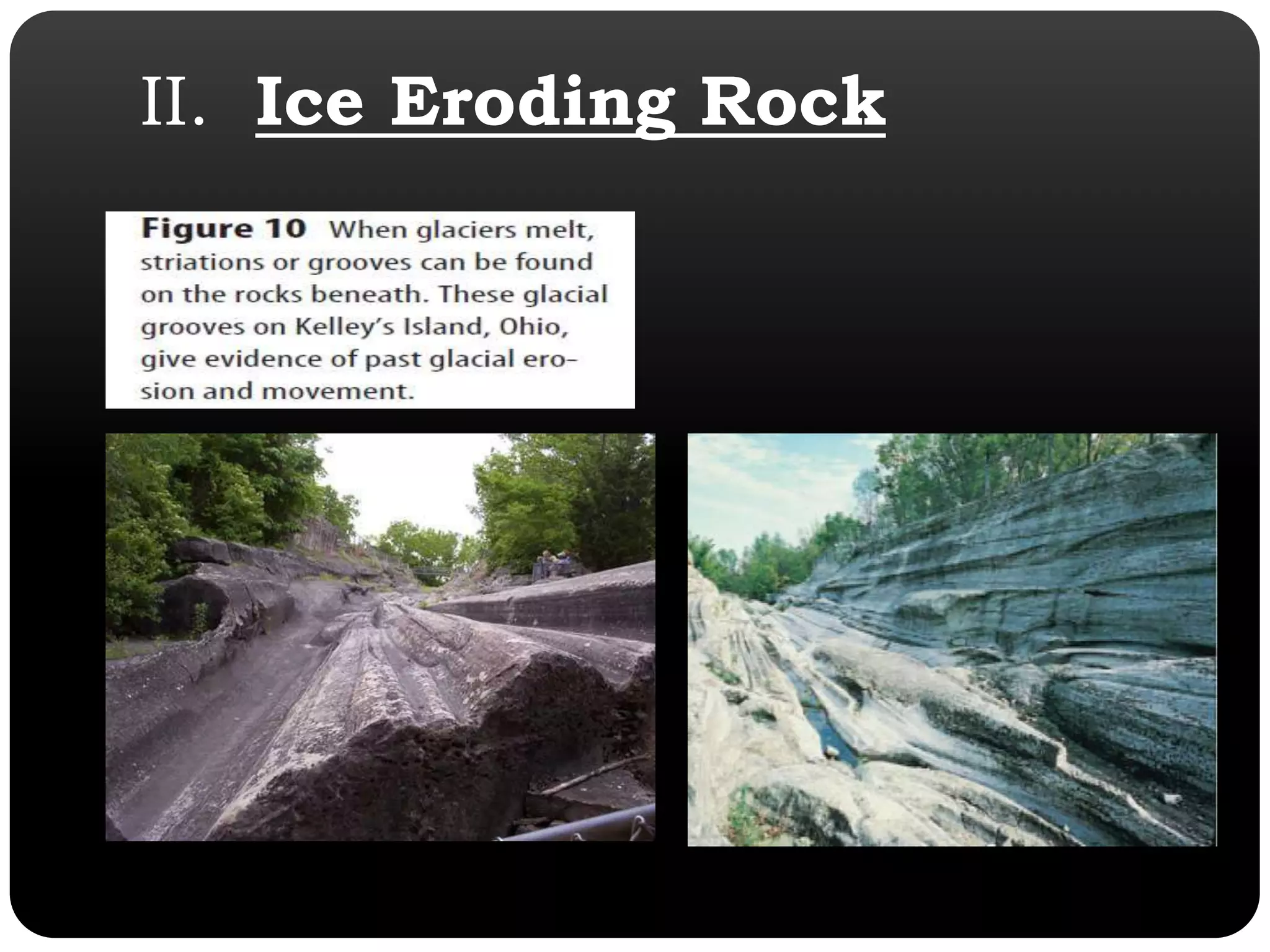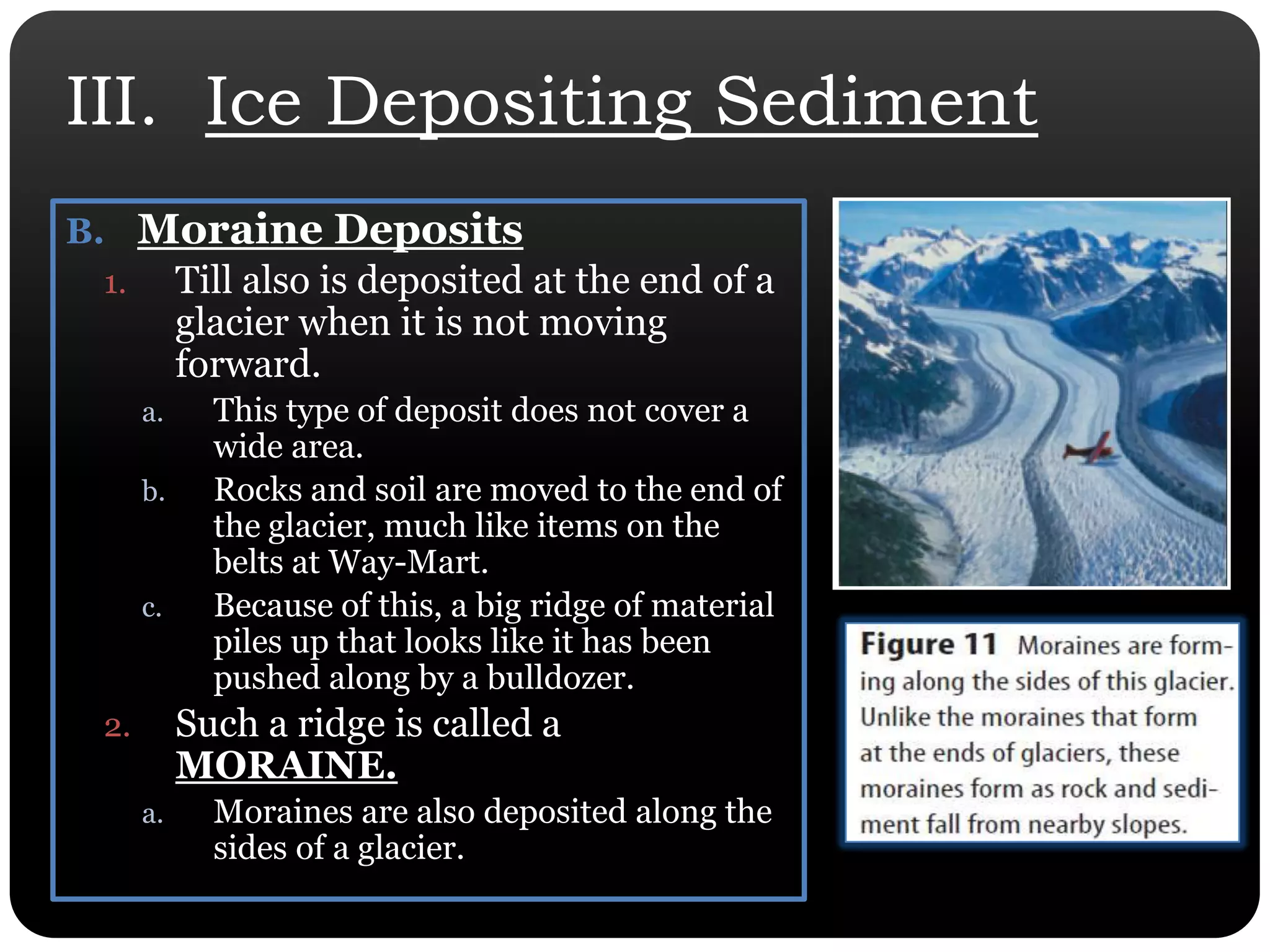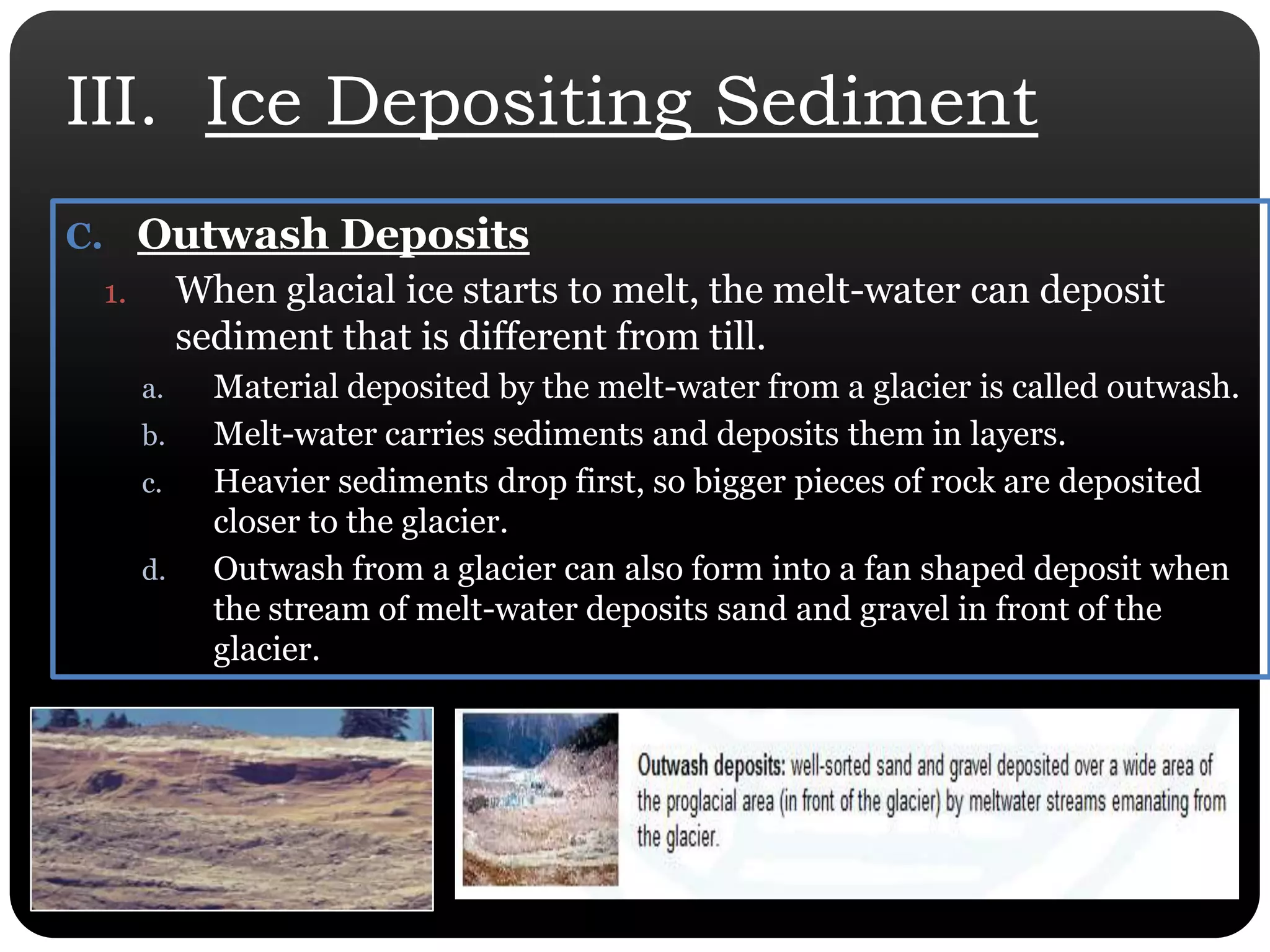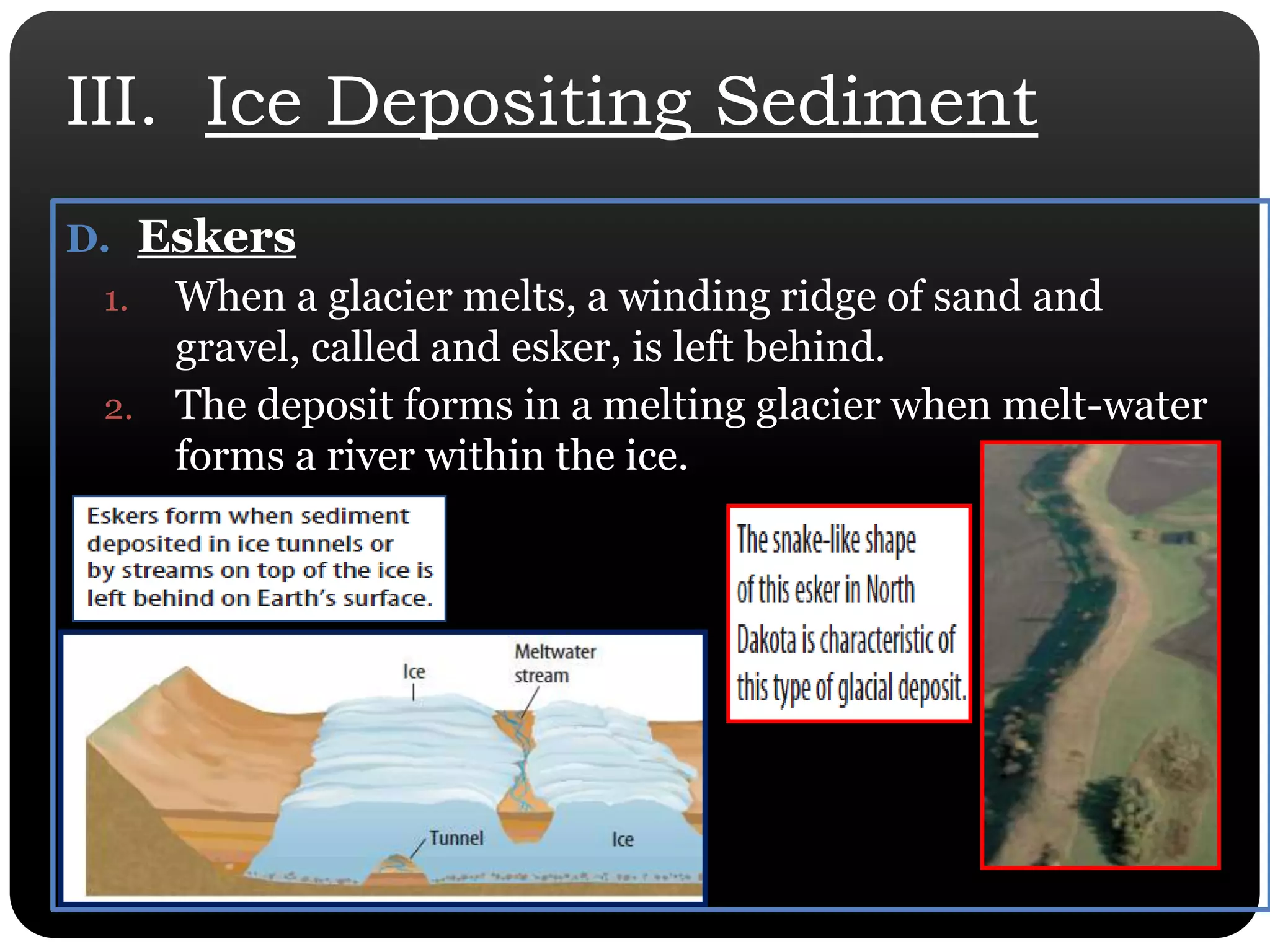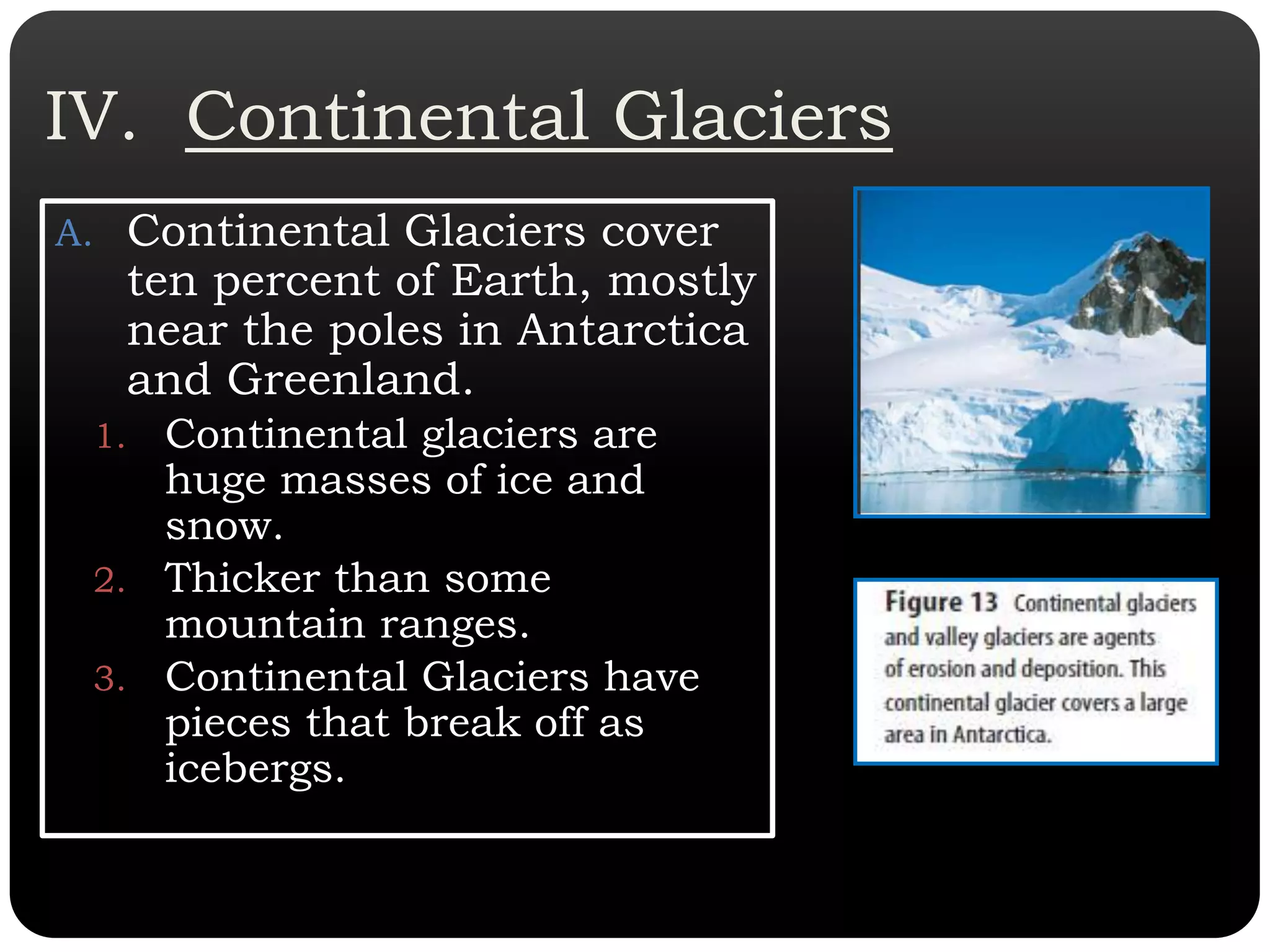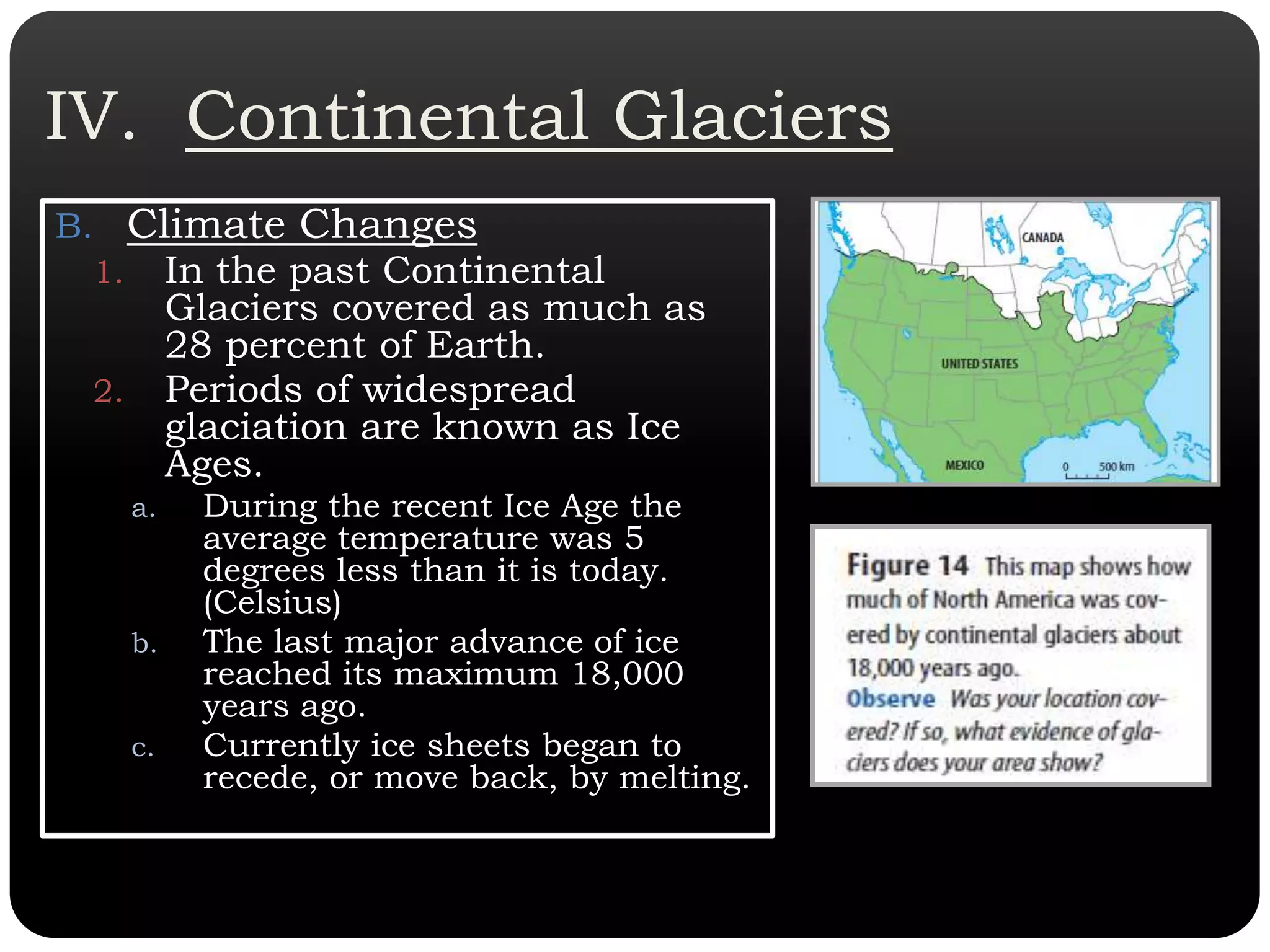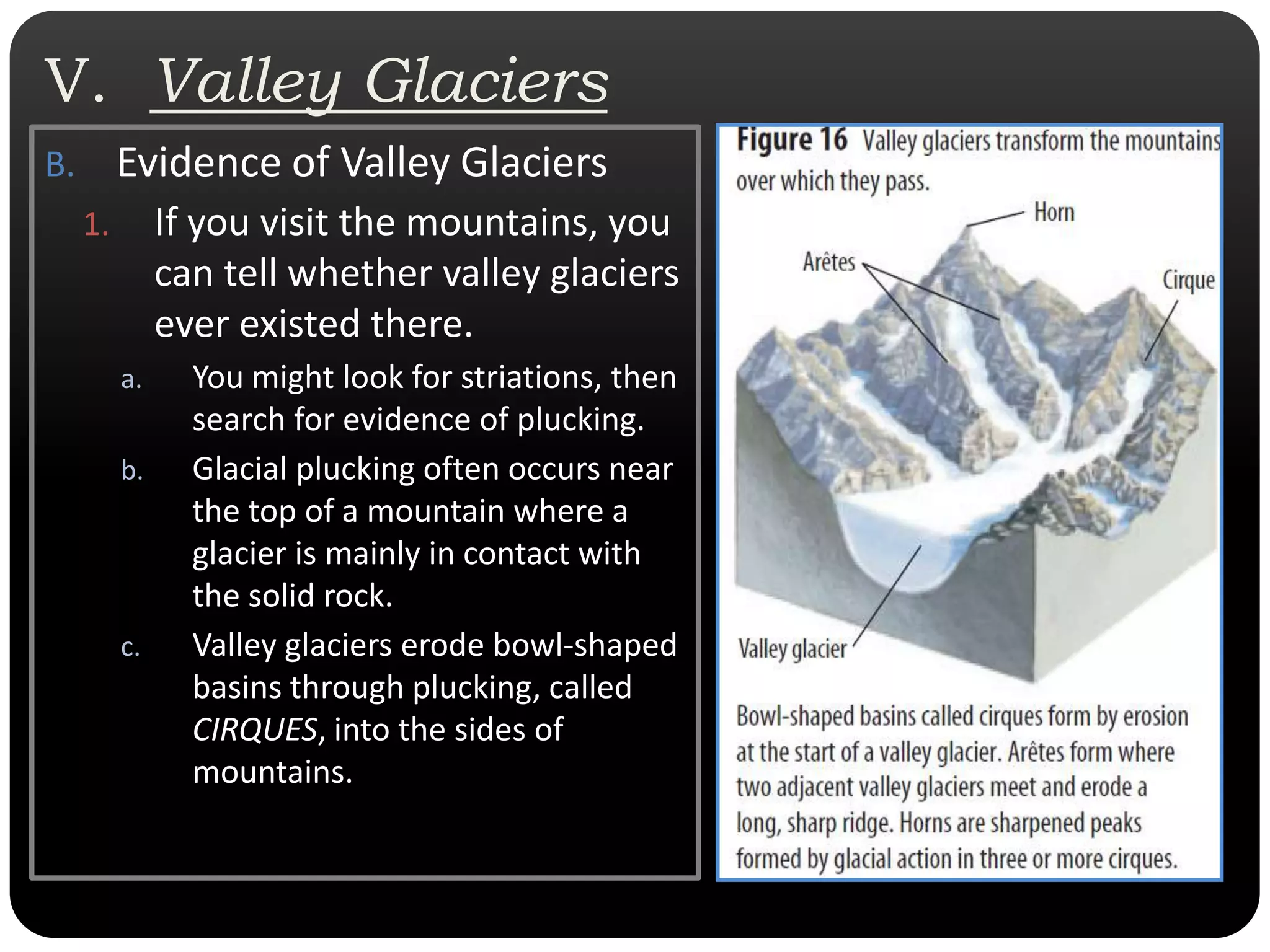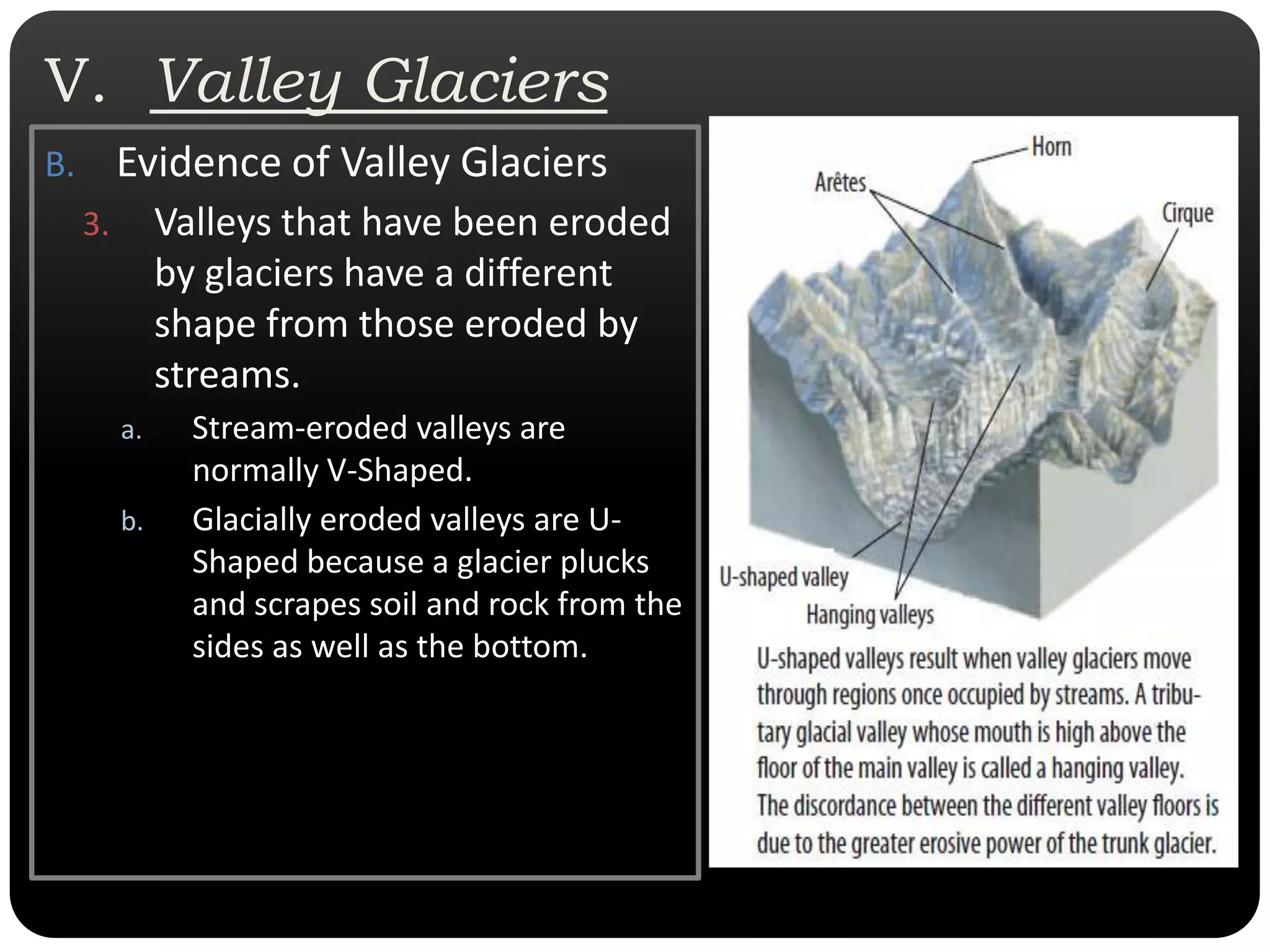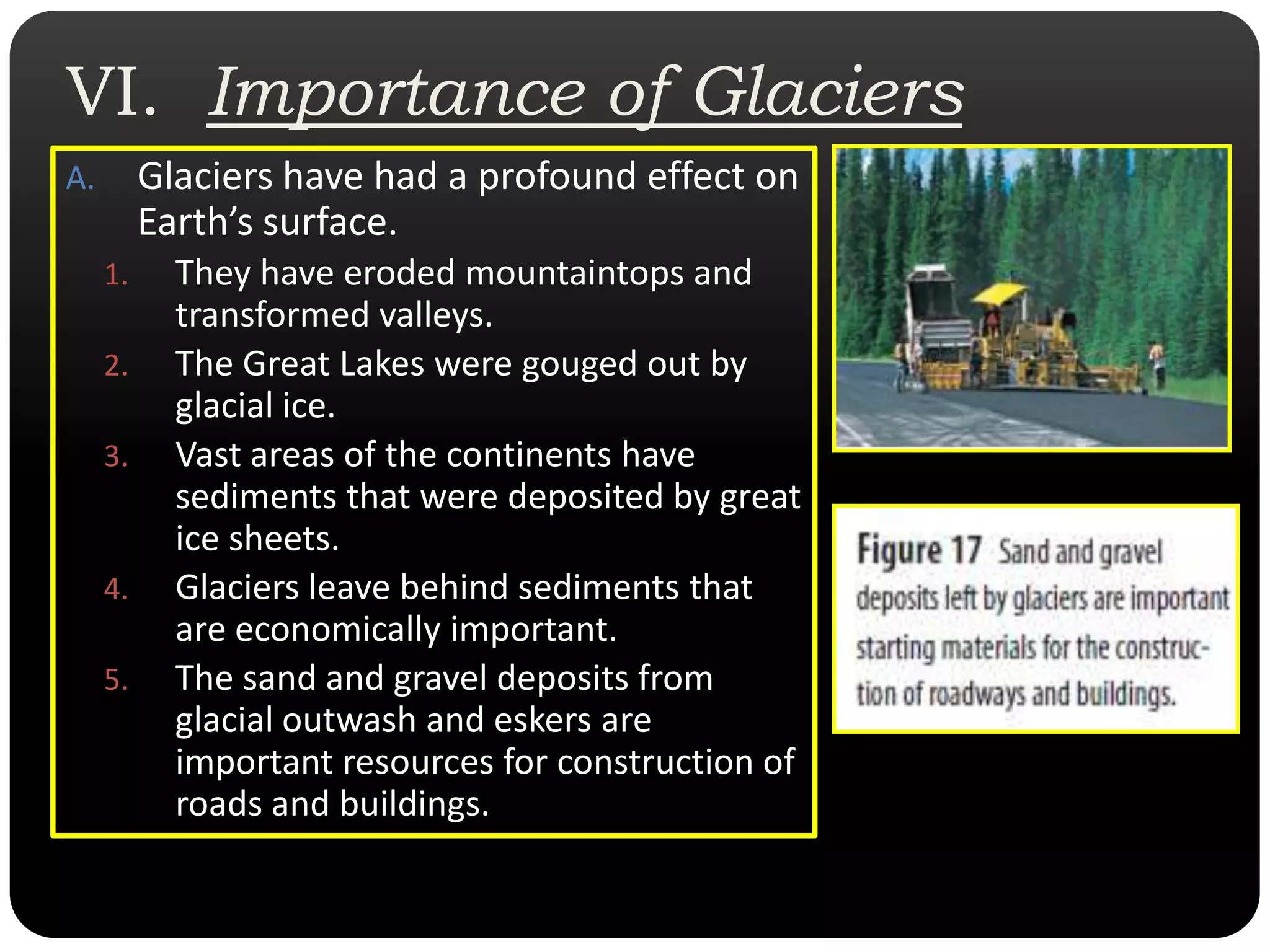Glaciers form when snow accumulates over many years and compresses into ice. As glaciers move over land under their own weight, they erode the surface through processes like plucking and scouring. Glaciers carry eroded material and deposit it elsewhere through till, moraines, outwash, and eskers when they melt. Continental glaciers once covered over 28% of Earth during ice ages but now cover around 10%, while valley glaciers still exist in mountainous regions and provide evidence of past glacial erosion.
